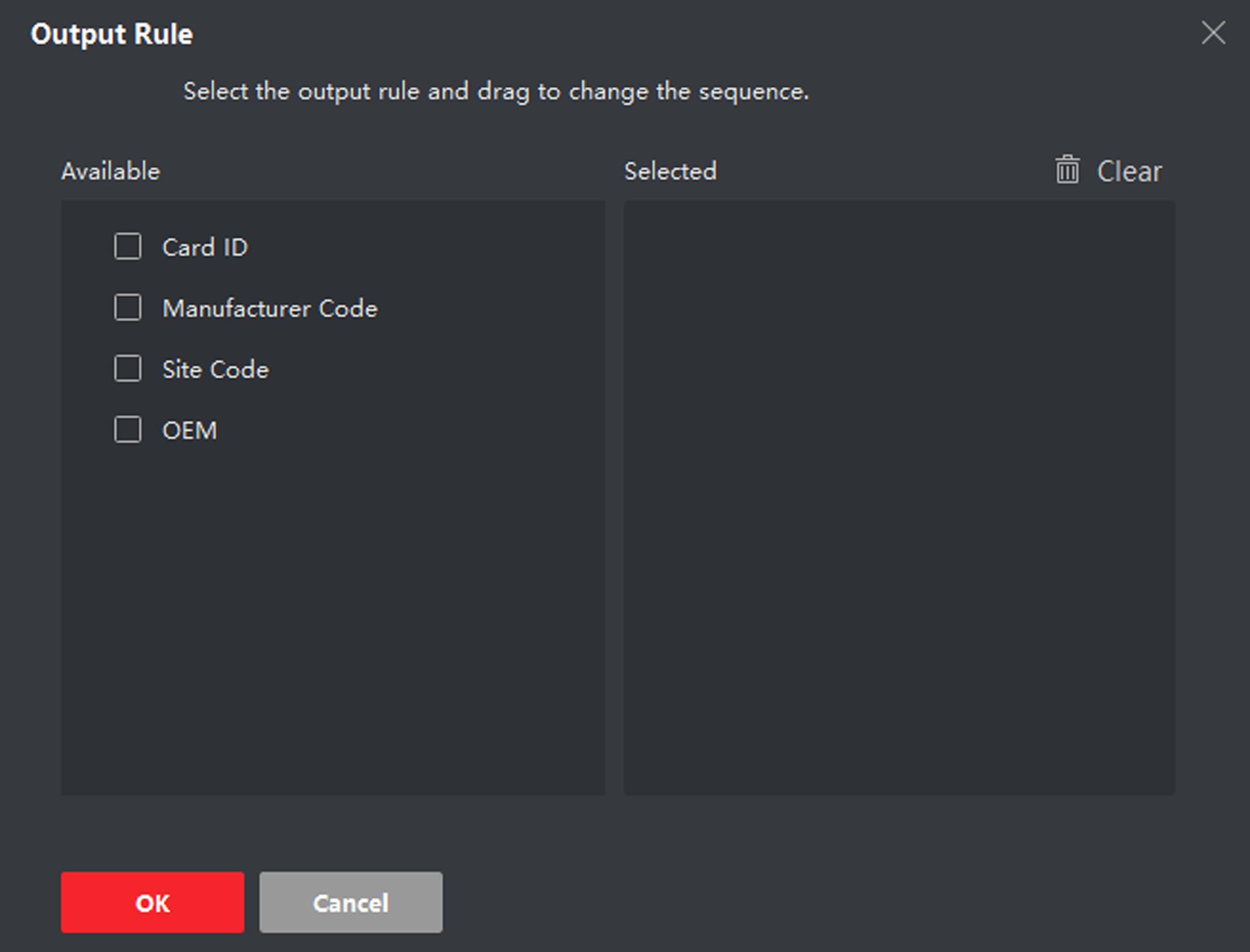Configure Custom Wiegand Rule
Based on the knowledge of uploading rule for the third party Wiegand, you can set multiple customized Wiegand rules to communicate between the device and the third party card readers.
Wire the third party card readers to the device.
-
By default, the device disables the custom wiegand function. If the device enables the custom Wiegand function, all wiegand interfaces in the device will use the customized wiegand protocol.
-
Up to 5 custom Wiegands can be set.
-
For details about the custom Wiegand, see #GUID-A4D1F5FD-7033-41C1-B0BE-7968D113D664.
Configure Custom Wiegand Rule
Based on the knowledge of uploading rule for the third party Wiegand, you can set multiple customized Wiegand rules to communicate between the device and the third party card readers.
Wire the third party card readers to the device.
-
By default, the device disables the custom wiegand function. If the device enables the custom Wiegand function, all wiegand interfaces in the device will use the customized wiegand protocol.
-
Up to 5 custom Wiegands can be set.
-
For details about the custom Wiegand, see #GUID-A4D1F5FD-7033-41C1-B0BE-7968D113D664.
